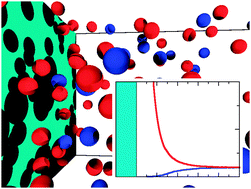Despite the fact that our conceptual understanding of the electrical double layer has advanced during the past few decades, the interpretation of experimental and applied work is still largely based on the venerable Poisson–Boltzmann theory of Gouy, Chapman and Stern. This is understandable since this theory is simple and analytic. However, it is not very accurate because the atomic/molecular nature of the ions/solvent and their correlations are ignored. Simulation and some theoretical studies by ourselves and others that have advanced our understanding are discussed. These studies show that the GCS theory predicts a narrow double layer with monotonic profiles. This is not correct. The double layer is wider, and there can be substantial layering that would be even more pronounced if explicit solvent molecules are considered. For many years, experimental studies of the double layer have been directed to the use of electrochemistry as an analytical tool. This is acceptable for analytic chemistry studies. However, the understanding of electrochemical reactions that typically occur at the electrode surface, where simulation and theory indicate that the GCS theory can have substantial errors, requires modern approaches. New, fundamental experimental studies that would lead to deeper insights using more novel systems would be desirable. Further, biophysics is an interesting field. Recent studies of the selectivity of ion channels and of the adsorption of ions in a binding sites of a protein have shown that the linearized GCS theory has substantial errors.

You have access to this article
 Please wait while we load your content...
Something went wrong. Try again?
Please wait while we load your content...
Something went wrong. Try again?


 Please wait while we load your content...
Please wait while we load your content...